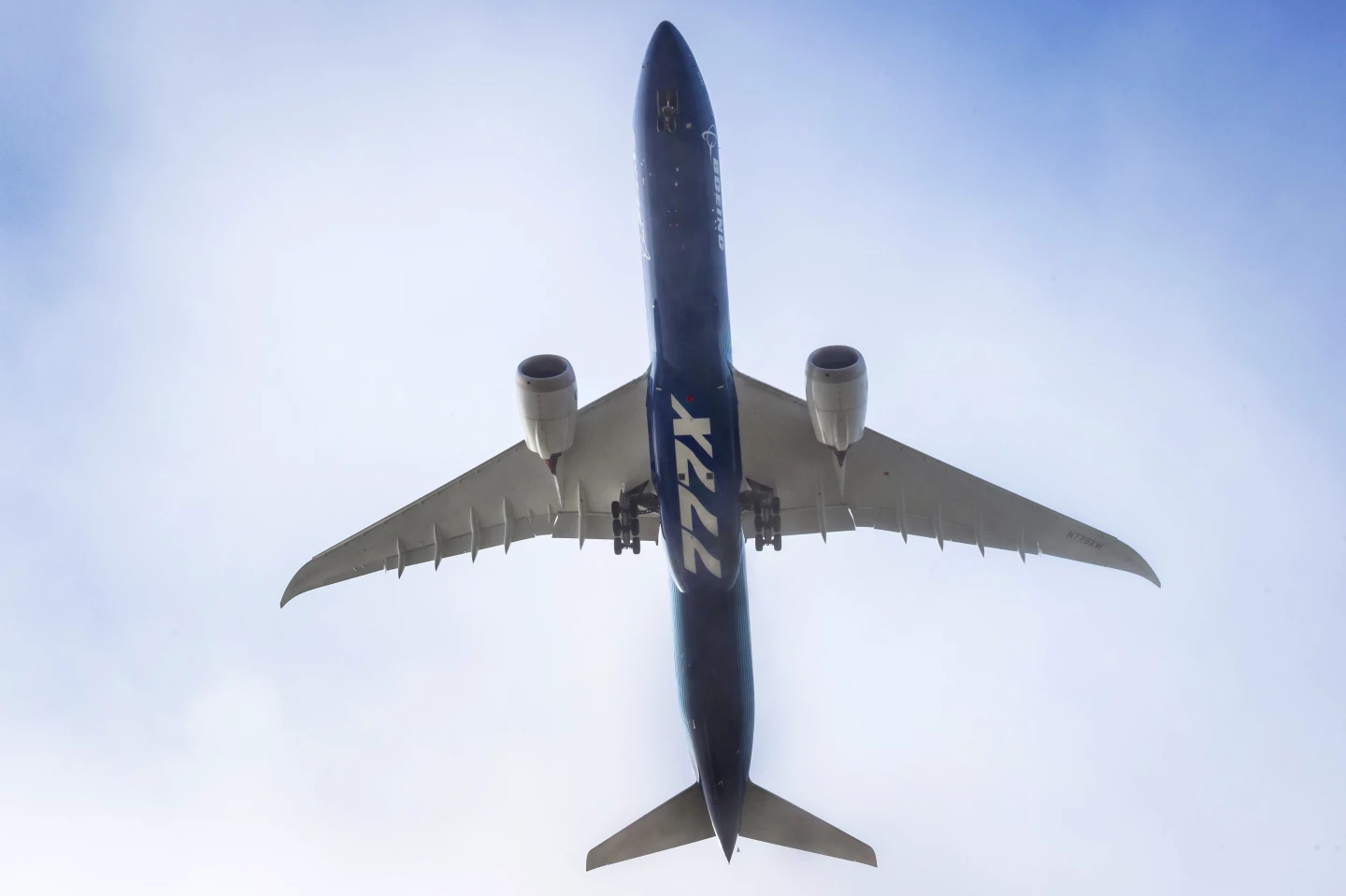After several delays due to bad weather, Boeing's 777X has successfully completed its maiden flight. On January 25, 2020, at 10:09 am PST, WH001, the latest version of the 777 family, took off from Paine Field in Everett, WA, with Chief Pilot for Boeing Test & Evaluation Captain Van Chaney and Boeing Chief Pilot Craig Bomben at the controls for a three-hour and 51-minute test flight before landing at Boeing Field in Seattle.
Originally unveiled at the 2013 Dubai Airshow, the 777X is an advance on the engineering and interior innovations of the 777 and 787 Dreamliner. The twin-engine jetliner is available in the 777-8 and 777-9 variants with ranges of up to 8,700 nm (10,012 mi/16,110 km) and seating between 350 and 425 passengers.
The key innovation of the 777X is its lightweight wing design based on a composite spar made from over 400 miles (644 km) of carbon tape cured in a specially-built autoclave. This allows the aircraft to have a wingspan of 235 ft (72 m) – a span so long that the wings have folding sections at their tips so the plane can fit in conventional boarding gates.

These extremely long, narrow wings combined with the 777X's two GE9X high-bypass turbofan aircraft engines generating 100,000 lb of thrust each helps to improve fuel efficiency by 10 percent and offer 10 percent lower operating costs.
Inside, the 777X boasts a more spacious cabin, large overhead bins for easy access, larger windows, as well as improved cabin altitude and humidity.
The first flight focused on putting the aircraft's systems and structures through their paces while ground crews monitored instrument telemetry in real-time. WH001 is currently undergoing more tests and three more test prototypes will come online in the near future.
"The 777X flew beautifully, and today's testing was very productive," says Chaney. "Thank you to all the teams who made today possible. I can't wait to go fly your airplane again."
Source: Boeing






